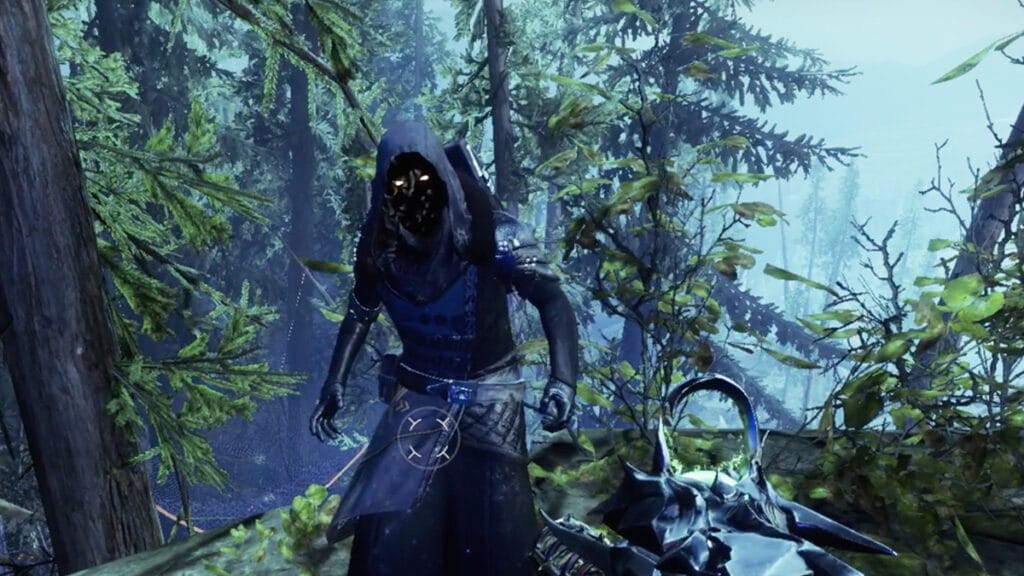Skip To...
Lately, the RTS genre has been lacking one key element: strategy. I find this odd, as many of us delve into these games to find the best way to win a match strategically. Sadly, we can narrow down many of these games to “rush army and beat the enemy.” But then, games like Tempest Rising bring a 90s RTS feel to the table while adding many modern features that make it feel highly accessible while keeping the core of real-time strategy. What you get is a complete package of strategic greatness, which is what we’ve all been craving.
A War in Two Fronts
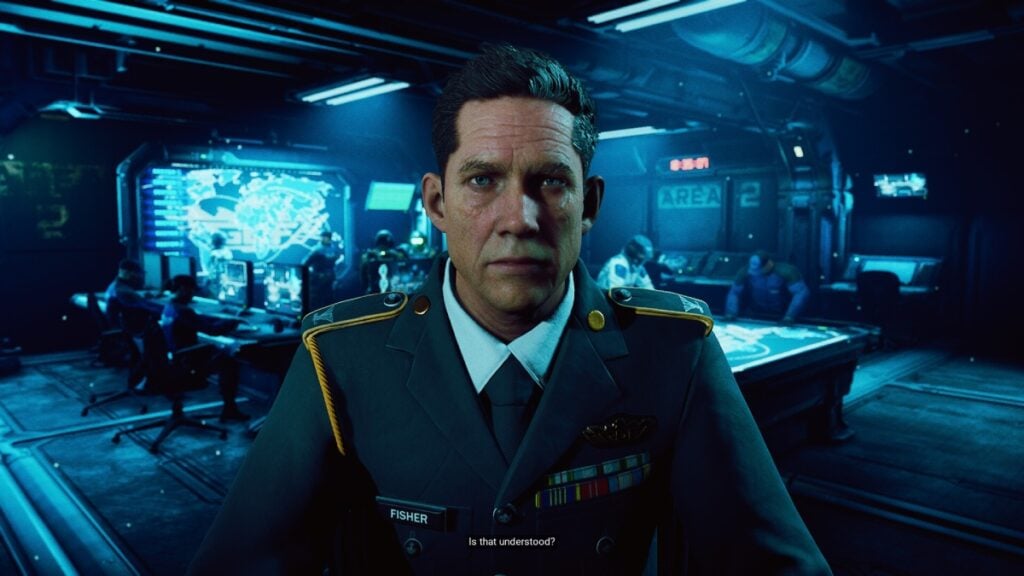
When it comes to real-time strategy games, campaigns are a hit or miss. In a way, they serve as a long tutorial. You get to learn how the units play and the best wait to use them before someone kicks your butt mercilessly in online play. Tempest Rising lands in the “hit” category with its two 11-mission campaigns, one for each faction.
You start as the GDF (Global Defense Force) or the Tempest Dynasty. The former is your well-funded faction labeled as the “peacekeepers” of the globe, while the latter is more of a Guerrilla-type faction. However, both are looking to use the Tempest, a strange, tendril-like substance popping up around the planet. With the general tidbits out of the way, let’s dive into why this campaign is one of the best we’ve had in recent RTS games.
As someone who is a bit fearful of the multiplayer aspect of real-time strategy games, I always fall back into the cozy feel of a campaign or skirmish mode. Fortunately, the former is top-notch here. As I mentioned, you have two campaigns. Each one has 11 missions that are highly unique for every faction and, most importantly, varied.
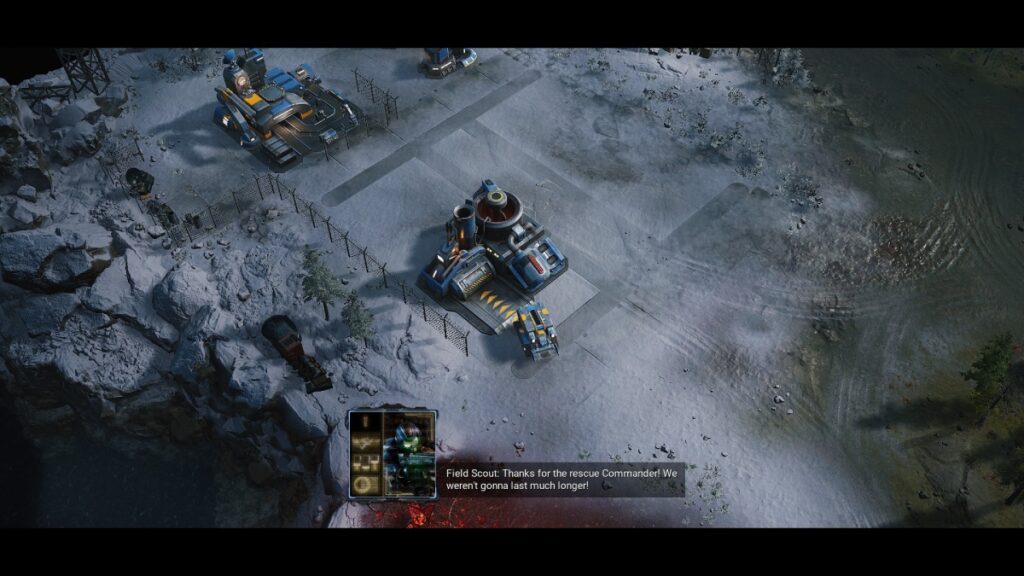
In most missions, you’ll always have to push back the enemy force. You’ll have to either destroy their bases, capture them for yourself, or build your own to send a destructive force to your enemy. Then, you’ll get a few unique missions focusing on stealth, sabotaging, and even escorting certain units. On top of that, there are many optional objectives on each mission that you can complete for currency rewards. The currency you get will let you buy upgrades for your campaign or unlock permanent Doctrines, which work like a tech tree.
Overall, Tempest Rising has a superb campaign that gets even better due to its superb presentation. I’ll delve into the presentation aspect later because it deserves its spot. However, the 22 missions are fantastic, highly replayable, and an excellent way to acquaint players with the game’s mechanics and factions. Plus, the story is quite interesting. It isn’t ground-breaking, but it isn’t forgettable, and that’s a huge plus.
Two Factions, Two Vastly Different Playstyles

Another surprising thing about Tempest Rising is how different both of its factions feel. This could be due to the game having only two compared to other RTS games where there are at least a dozen factions, countries, leaders, you name it. However, I prefer quality over quantity any day of the week.
Initially, I played most of my matches as the GDF. I liked the aesthetics a bit more and loved some of its specialist units, like the stealth-oriented sniper who is great at taking down enemies silently or the comms officer who buffs allies while debuffing foes. However, I switched to Tempest Dynasty for a few rounds and never looked back. If a faction has a hamster ball-like vehicle you can use to destroy enemies, that’s my calling.
In all seriousness, both factions felt incredibly unique. I loved how the GDF felt more tactical and required a better army composition to make use of buffs and debuffs. However, I also loved the fact that the Tempest Dynasty was all about over-the-top units and pure destruction.
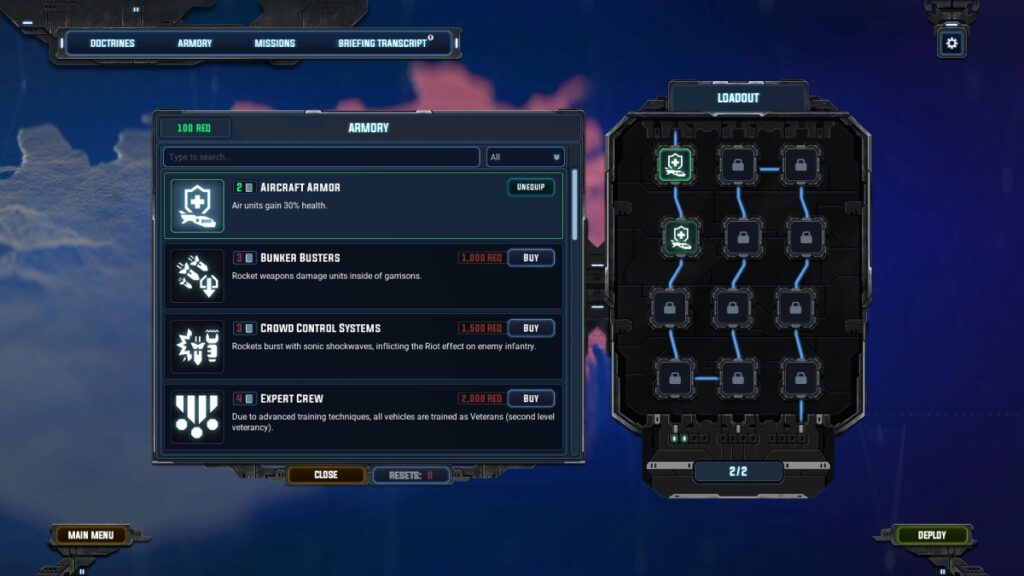
Another thing that made them feel different from one another was the Doctrine system. Each faction has a tech tree of sorts, called Doctrines, that you can purchase to provide passive bonuses to your units and buildings. For instance, the Tempest Dynasty can unlock bonuses for Plans. Plans are a sort of edict you can enact to provide bonuses to some units or buildings at the cost of power. By buying Doctrines that favor Plans, you’ll reduce the power cost or get better bonuses. The GDF, for example, gets Doctrines to increase Comms, which are buffs that increase your units’ attack and speed.
After playing many skirmishes, I noticed how differently I could build my army depending on these Doctrines. Even if I chose one faction all the time, it always felt fresh, thanks to these upgrades. Also, I finally felt I was using an actual strategy to beat my foes. It wasn’t just about rushing an army and sending it to overwhelm my opponents. I had to plan my upgrades to counter theirs. There was a need to create an army with a good unit composition. After years of mindlessly clicking buttons in other games, Tempest Rising brings the layer of strategy I’ve been longing for.
Units aside, buildings also play a huge factor and work differently for each faction. The GDF has a more classic building style where you pick a spot first and then build the structure. Tempest Dynasty, on the other hand, lets you queue the buildings and then place them on the map. I liked the fact that both factions had a few buildings, which made managing them much easier. While the system might feel too simple at times, I prefer this, as it lets me focus on the actual real-time gameplay instead of managing a lot of buildings, upgrades, techs, and whatnot.
Flawless Presentation
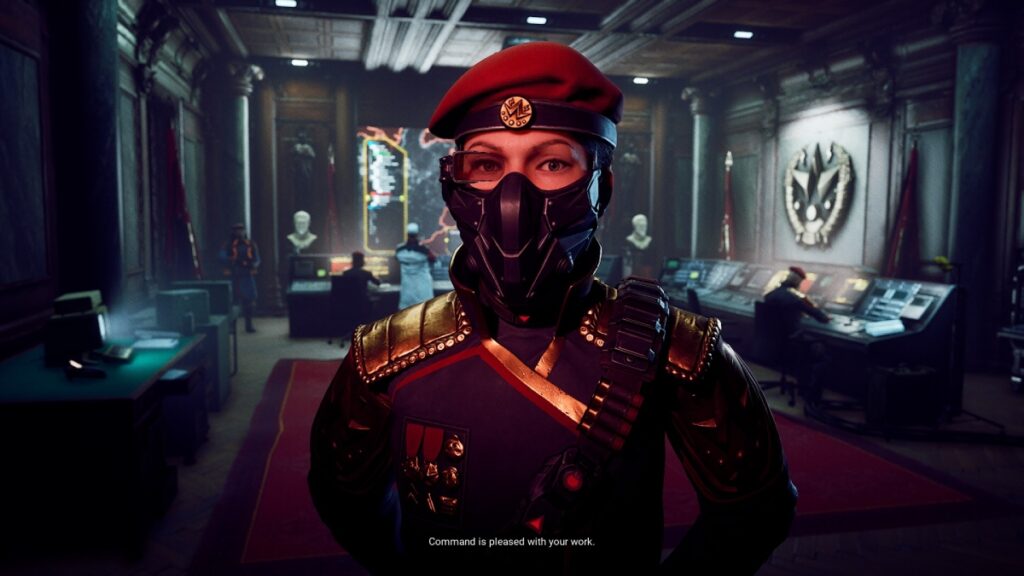
One thing that has always bothered me is how many new RTS games don’t care about the presentation. By that, I mean the visuals, music, storytelling, and map design. Yes, the core gameplay is important, but having a cohesive look is essential, too. Tempest Rising achieves this in every aspect.
For starters, the story has amazing cutscenes and excellent voice acting. Having your faction’s leader briefing you before a mission is great and adds another welcome level of immersion. Furthermore, each faction has its campaign UI, which I greatly liked. All of these might seem like small additions, but they add to the already gorgeous package that Tempest Rising is.
On top of everything, Tempest Rising has an excellent soundtrack and even better visuals, which do not tank your performance. One thing that baffles me is how many strategy games fumble in terms of performance. Tempest Rising is an optimized haven. I never experienced frame drops, crashes, or any hiccups. It all ran smoothly, even if my screen was full of explosions. The cherry on top of it all is that the actual art style is great. Everything looked fantastic, and while most scenarios are bleak due to the game’s setting, I loved how original it felt.
Reviving the Genre
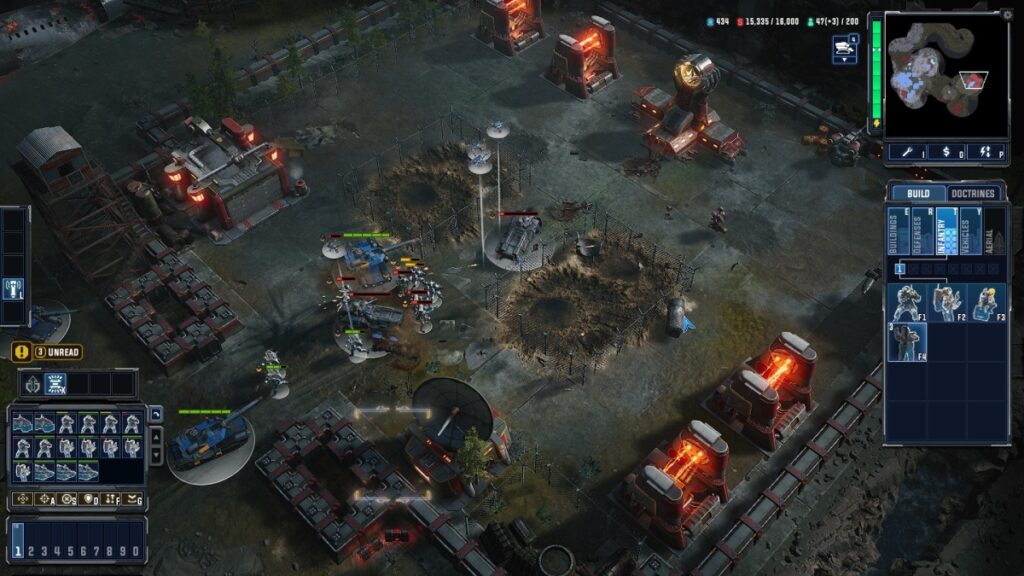
When people look at Tempest Rising, they’ll be quick to compare it to Command & Conquer, and I don’t blame them. The inspiration is there, and it certainly brings aspects from the genre back in the 90s. However, Tempest Rising has solid legs to stand on, which also makes it feel unique. It brings quality over quantity in a lot of ways, and that’s something that veterans, but especially newcomers, will enjoy.
I do feel some players might rush through the single-player content in a day, especially if they aren’t interested in multiplayer matches. That might be my only minor complaint. Even if I loved the campaign, it feels a bit too short. Yes, you can replay it with a higher difficulty and stick to skirmishes, but that’s it. On the other hand, hardcore RTS gamers will have a blast. Tempest Rising captures what made the genre so beloved and elevates it by bringing some much-needed additions.
Tempest Rising (PC Reviewed)
Tempest Rising is clearly inspired by the good old RTS days of the 90s and early 2000s, but it has so many unique features and high-quality additions that makes this game feel original and innovative.
Pros
- Two highly unique factions
- Easy-to-grasp systems
- Superb presentation
Cons
- There isn't a lot of content for solo players




